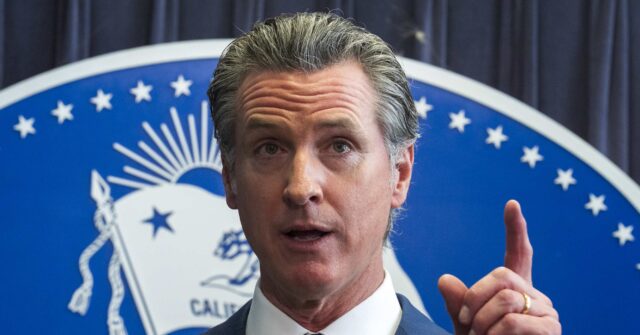In California, Governor Gavin Newsom faces a strategic challenge as he aims to assist Democrats in winning tight congressional races in the rural Central Valley without actively participating in the campaigning. The region, while not pivotal in presidential elections, bears significant weight in determining the U.S. House of Representatives’ control. Democrats previously succeeded in obtaining several congressional seats in California during the 2018 midterms, particularly in areas like Orange County and the Central Valley, which had leaned Republican but swung Democratic through Hillary Clinton’s presidential success. However, this trend reversed in 2020 when Republicans reclaimed four of the contested seats, retaining them in the subsequent midterm elections of 2022.
Recognizing the potential backlash from his liberal policies, Newsom has opted to minimize his presence in these critical races leading up to the November elections. His absence from key campaigning events in the Central Valley is a calculated move, distancing himself from Democratic candidates who may suffer from his association, as evidenced by the lack of joint appearances since the March primaries. Particularly in districts like the 13th and 22nd, Newsom’s last efforts to support Democratic candidates Rudy Salas and Adam Gray were made before the critical primary stage, reflecting a conscious decision to avoid putting them at risk of losing support due to his polarizing reputation.
Recent electoral history in the Central Valley serves as a reminder of the challenges Democrats face. In the 2022 elections, Republican candidates outperformed Newsom in districts where he previously campaigned. For example, gubernatorial candidate Brian Dahle won more than 8 percentage points over Newsom in the 13th district. Similarly, in the 22nd district, Republican incumbent Devin Nunes defeated Salas by a narrow margin of 3 percentage points. These results indicate the complexity of navigating local sentiments, which have recently leaned toward disapproval for Newsom’s policies, including contentious issues like coronavirus restrictions and tax increases.
Poll results from the Public Policy Institute of California highlight the growing discontent toward Newsom, especially in the Central Valley, where a staggering 57% of likely voters express disapproval of his leadership. This trend poses a significant risk to local Democratic candidates, who may be penalized for aligning with a governor struggling for favor. Even among statewide metrics, Newsom’s approval rating rests at a tenuous 49%, revealing the intricate balance he must maintain as he aims to influence the broader narrative without compromising the local electoral dynamics.
Beyond the Central Valley, the political landscape across California remains marked by critical races for Republicans in districts such as the 27th and the 45th, labeled as “toss-ups” by the Cook Political Report. These competitive races underscore the necessity for Democratic candidates to strategize effectively in the face of robust Republican efforts to solidify their hold on these seats. Former President Trump’s involvement through a rally in the Coachella Valley further signals a mobilized Republican base seeking to recapture momentum lost in previous cycles.
As the November elections approach, the interplay between Governor Newsom’s absence and the political ambitions of Democratic candidates encapsulates a significant moment in California politics. The challenges they face highlight the broader implications of party strategy and voter sentiment crucial to securing control of the U.S. House of Representatives. In a climate where divisive policies have resulted in mixed approval rates, the outcome of these races could resonate beyond state lines, impacting the national political landscape as Republicans attempt to chip away at Democratic dominance in traditionally blue regions.

